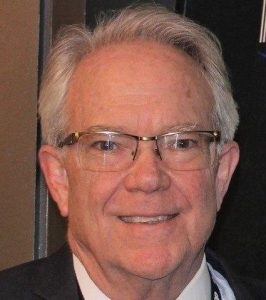In this era of new government-wide digital transformation and legacy systems modernization, Louisiana CIO Dickie Howze is an old hand. More than half a decade ago, his Office of Technology Services (OTS) was responsible for an enterprise digital transformation plan for its citizen services.
This was after the newly appointed Howze led Louisiana’s major IT consolidation in 2014, which was the catalyst for this transformation a few years later. This massive consolidation included all state IT resources and staff, swelling OTS to nearly 800 employees. Within OTS’ first year of IT consolidation, Howze estimated the state reduced overall expenditures by $75 million.
The Louisiana Enterprise Architecture (EA) project, resulting from House Concurrent Resolution No. 121, charged OTS with studying the current status of mission-critical information technology systems in the 16 agencies of the executive branch of state government. The objectives were to determine the risks posed and the costs of continued operation of outdated or ineffective information technology and to report findings and recommendations to the legislature by Feb. 1, 2018.
At that time, OTS reported that more than 150 legacy systems needed upgrades estimated at over $1 billion. Since that time, OTS has reduced this major risk to the public and entities across the state by almost 80 percent.
Howze describes himself proudly as “A multi-decade civil servant. I started my career with the Department of Children and Family Services in 1978 and remained in that organization serving as the Department Undersecretary and I stayed there for three or four years.”
However, a major change in the state’s IT organization began towards the end of the previous administration of Gov. Bobby Jindal and into the new administration of Jon Bel Edwards in 2016. “It was decided that Louisiana was going to become more efficient by virtue of consolidating Information Technology at the executive branch level,” said Howze.
At the time. Howze was the director of information technology over at Children and Family Services. “I was asked at that time to become the state CIO and execute the consolidation plan. I was invited by state leadership to come over and begin the process to pull together the IT consolidation across the executive branch in about the April timeframe of 2013.”
The number of IT employees in the Division of Administration, which is the management arm of the state government over the executive branch, was several hundred people when the law was implemented in July 2014.
“In taking, activating, and bringing to reality the Office of Technology Services, we moved over 1,247 full-time employee positions,” Howze said. “Some of them were vacant, some of them were filled with active classified employees, and through the vacancies and through separations, we were reduced by the administration, to having about 800 people to run all of Information Technology in the state.”
This forced the newly forged OTS to become immediately efficient. By pooling resources and taking advantage of obviously low-hanging fruit discovered following a major endeavor of this kind, the savings were huge. But Howze noted that, “We didn’t lay off a single person, and we didn’t cut anybody’s salary by one cent in this overall process.”
Such an accomplishment did not come out of thin air. “It was primarily at the at the request of the governor, as he was continuing to shrink state government. And leadership at the time was searching for other ways to cut the spending of state general funds, and subsequently the consumption of federal dollars as a result of that,” explained Howze. They came up with this idea by conducting research and by learning that many other states had followed the same path to achieve savings. “So, it really came from the top,” he said.
No surprise here, really. Gov. Jindal was a former employee of the power-house global management consulting firm, McKinsey & Company, and certainly, some of the McKinsey Way rubbed off on the then-young Jindal.
With such an immense reinvention of state IT, I was curious about how the CIO governance model itself was affected. A number of states have done what Howse described. Many of them consolidated IT and even the state CIO position itself, going from a state chief information officer who would report to an administrative agency, to an organizational structure designating the state CIO as a member of the governor’s cabinet. It’s a slow-moving trend and direction that each new election period seems to consider, as Howze went on to explain.
“There was no consideration of that. Not then. However, we believe that as we approach our next election, and we’re only a month and 15 days away. Our current governor is reaching the end of his second term, Governor Edwards. And so as we embark upon another election season, and a new administration, we hope to have the opportunity during transition to at least facilitate the conversation about elevating the position of the CIO to the cabinet, so that you know, we can have ready access to the cabinet and I can have access to them, and they can have access to me if I’m in this position again.”
It would seem a just award for the significant success Dickie Howze has overseen in the Pelican State.

